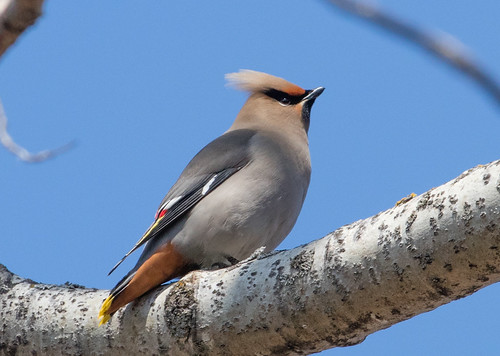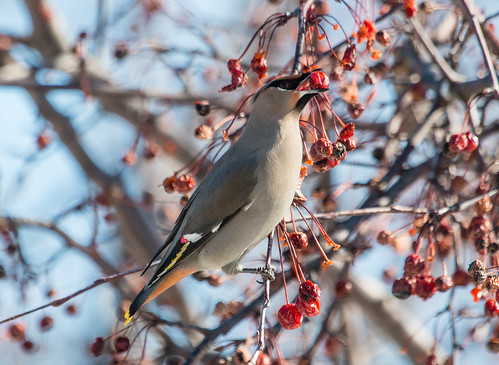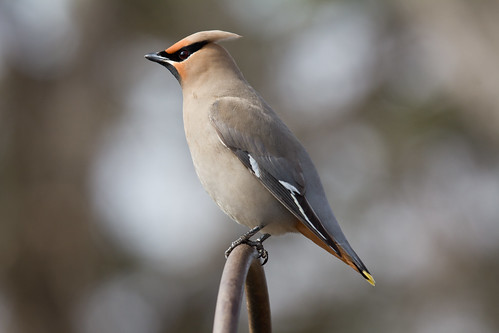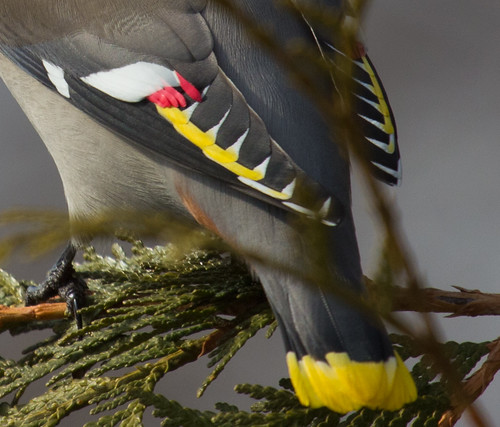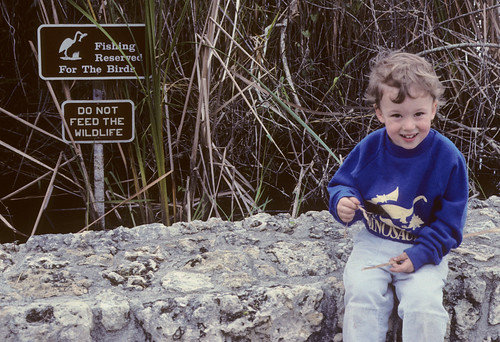When I started birding, my field guide (the Golden Guide) was like the Sears Wish Book of my childhood—it showed so very many birds in such a rainbow of colors and array of sizes and shapes, making me salivate over the prospect of seeing some. Not being in any serious birding networks at the time, and this being 1975, long before home computers, much less projects like eBird giving us quick access to all the checklists of other people in our area and further afield, I had no clue how many of those birds I could be seeing right near home had I more experience, or how very many I could be seeing if I could travel. I never dreamed that it would be remotely possible to see all the birds in that book, or even half—I was genuinely satisfied with my total my first spring—40 species—and my total for my first year—120. I had seen so many! And by going at it in my poky, lackadaisical yet somehow methodical way, I savored each new bird, read a lot about it, and tried to see it again and again.
But after 5 years in Madison, Wisconsin, after Russ got his Ph.D. and started fielding job possibilities, I was ready to branch out, and lobbied heavily for him to take a job offer in Duluth, almost entirely because of the birding possibilities. I was thinking about Boreal Chickadees and northern owls, of course, but the Bohemian Waxwing was high on my Most Wanted list, too. Arthur Singer’s field guide drawing was stunning—the bird’s stately bearing with that lovely crest, ethereally soft plumage in understated colors accented with brilliant wing and tail decorations—how could the reality possibly match the anticipation? Yet over and over I’d been discovering that real birds were even more gorgeous than their drawings. Could a Bohemian Waxwing be as pretty as its picture?
I could look from bird to bird to bird. Young ones had fairly minimal wing ornaments.
Older birds were even more stunning than the one in the book—the soft texture of the body feathers, so strangely sleek compared to most bird plumage—made such a wonderful contrast to the shiny, waxy primary yellow and red of the wing markings and tail tip.
How could a bird possibly grow such incongruously spectacular feathers?
Seeing waxwings near my house became an annual winter tradition—they’d show up at crabapples and mountain ashes just about every December, and would stick around until they depleted the neighborhood’s fruit supplies. And every time I stopped to watch them, I was taken aback all over again by their stunning beauty.
After I started talking about birds on the radio in 1986, people in my neck of the woods started thinking of me as the “bird lady.” When confronted with a bird problem, my name would be the first thing that would pop into a lot of people’s heads. I quickly had to get a license to rehab injured birds, because suddenly I’d come home from the pediatrician to a bird in a box on our front porch with a note, “Take care of this bird. God bless you.”
In late February or early March in 1988, someone found a Bohemian Waxwing right at an entrance to the Miller Hill Mall. The poor bird had an open wound on his foot and seemed to be intoxicated—a condition that occasionally affects waxwings in late winter as sugars in fruits and berries ferment. We’d already started calling our house the Peabody Street Detox Center. And now suddenly I had a real, live Bohemian Waxwing in my hands!
The delicate body feathers were just as soft as I’d imagined while the bright feather parts had a smooth, waxy texture. But what seemed even softer and more wondrous than the bird’s plumage was the bird’s soft, gentle nature. As sociable flocking birds, waxwings have a deep-rooted need for companionship, and when they don’t have other waxwings to hang out with, will sometimes settle for other species, at least temporarily. This handsome bird ate raisins and applesauce right out of my hand, and included my two-year-old son Tommy in his new circle of trust, readily alighting on Tommy’s finger. Unfortunately, I don’t have photos, but can still picture in my mind’s eye the wide-eyed delight on Tommy’s face, looking into the eyes of this handsome bird, who looked right back at Tommy.
He sobered up by the second day, but I was giving him antibiotics for his foot gash, so kept him for a few days longer. Every now and then he’d make soft little notes, and whenever he did, if I looked out, there would be a flock of waxwings in our mountain ash. His keen hearing could pick them out even with all our windows closed.
His foot healed well and his restlessness grew whenever he heard a flock outside, his soft little notes like pleas to the birds to come rescue him. So one morning during a warm front, I carried him out to the front porch, crouched down low so Tommy could bid the bird farewell, and opened my hand.
You’d think a captive bird would fly instantly off when you let it go, but in my experience they take a moment or two to get their bearings. Early spring music–the zip of Pine Siskins and the trickling gurgle of melting snow–filled the air. The waxwing sat in my hand for a full minute or so, looking from me to Tommy to the nearby trees. Then he nonchalantly flew up to a maple tree to perch, looking all around and preening his wings and his tail–maybe trying to shake off the taint of captivity. We watched him for a while, and then went inside, Tommy wistfully waving to him and saying, “Bye-Bye, Waxwing.”
We peeked out the living room window several times. After a few minutes, he flew to the mountain ash, so we had to switch to my bedroom window, where we watched him eating berries. He glanced occasionally at us through that window as he ate.
A half hour or so later, a small group of waxwings joined him. We could still recognize him because his tail feathers had become slightly bent—one of the problems of keeping any wild bird in captivity. Of the flock, he was the only waxwing that peeked at us through the window. The group stayed in the tree for only a few minutes. Fortunately, Tommy and I were watching as they took off. “Bye-bye, Waxwing,” we said together, to the best bird EVER.
